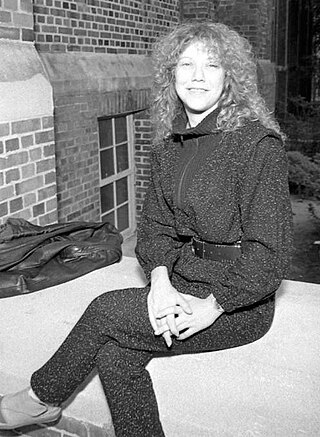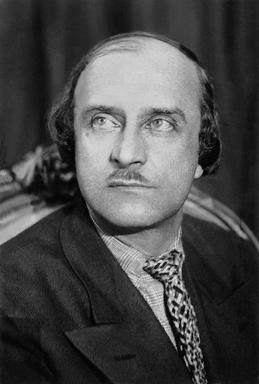
Choreography is the art or practice of designing sequences of movements of physical bodies in which motion or form or both are specified. Choreography may also refer to the design itself. A choreographer is one who creates choreographies by practising the art of choreography, a process known as choreographing. It most commonly refers to dance choreography.
Judson Dance Theater was a collective of dancers, composers, and visual artists who performed at the Judson Memorial Church in Greenwich Village, Manhattan New York City between 1962 and 1964. The artists involved were avant garde experimentalists who rejected the confines of Modern dance practice and theory, inventing as they did the precepts of Postmodern dance.
Postmodern dance is a 20th century concert dance form that came into popularity in the early 1960s. While the term "postmodern" took on a different meaning when used to describe dance, the dance form did take inspiration from the ideologies of the wider postmodern movement, which "sought to deflate what it saw as overly pretentious and ultimately self-serving modernist views of art and the artist" and was, more generally, a departure from modernist ideals. Lacking stylistic homogeny, Postmodern dance was discerned mainly by its anti-modern dance sentiments rather than by its dance style. The dance form was a reaction to the compositional and presentational constraints of the preceding generation of modern dance, hailing the use of everyday movement as valid performance art and advocating for unconventional methods of dance composition.
Gawain Garth Fagan, CD is a Jamaican modern dance choreographer. He is the founder and artistic director of Garth Fagan Dance, a modern dance company based in Rochester, New York.

Contemporary ballet is a genre of dance that incorporates elements of classical ballet and modern dance. It employs classical ballet technique and in many cases classical pointe technique as well, but allows a greater range of movement of the upper body and is not constrained to the rigorously defined body lines and forms found in traditional, classical ballet. Many of its attributes come from the ideas and innovations of 20th-century modern dance, including floor work and turn-in of the legs. The style also contains many movements emphasizing the body's flexibility.

Alessandra Ferri OMRI is an Italian prima ballerina. She danced with the Royal Ballet (1980–1984), American Ballet Theatre (1985–2007) and La Scala Theatre Ballet (1992–2007) and as an international guest artist, before temporally retiring on 10 August 2007, aged 44, then returning in 2013. She was eventually granted the rank of prima ballerina assoluta.

Steve Paxton is an experimental dancer and choreographer. His early background was in gymnastics while his later training included three years with Merce Cunningham and a year with José Limón. As a founding member of the Judson Dance Theater, he performed works by Yvonne Rainer and Trisha Brown. He was a founding member of the experimental group Grand Union and in 1972 named and began to develop the dance form known as Contact Improvisation, a form of dance that utilizes the physical laws of friction, momentum, gravity, and inertia to explore the relationship between dancers.

David Gordon was an American dancer, choreographer, writer, and theatrical director prominent in the world of postmodern dance and performance. Based in New York City, Gordon's work has been seen in major performance venues across the United States, Europe, South America and Japan, and has appeared on television on PBS's Great Performances and Alive TV, and the BBC and Channel 4 in Great Britain.
The Cape Town City Ballet Company, formerly known as the CAPAB Ballet Company, is a dance company based in Cape Town, South Africa.
Deborah Hay is an American choreographer, dancer, dance theorist, and author working in the field of experimental postmodern dance. She is one of the original founders of the Judson Dance Theater. Hay's signature slow and minimal dance style was informed by a trip to Japan while touring with Merce Cunningham's company in 1964. In Japan she encountered Noh theatre and soon incorporated nô's extreme slowness, minimalism and suspension into her post-Cunningham choreography. Sometimes she also imposed stressful conditions on the dancers, as with her "Solo" group dance that was presentation at 9 Evenings: Theatre and Engineering.

Douglas Dunn is an American dancer and choreographer based in New York City.
Lucinda Childs is an American postmodern dancer and choreographer. Her compositions are known for their minimalistic movements yet complex transitions. Childs is most famous for being able to turn the slightest movements into intricate choreography. Through her use of patterns, repetition, dialect, and technology, she has created a unique style of choreography that embraces experimentation and transdisciplinarity.

Sally Rachel Banes was a notable dance historian, writer, and critic.
The Dayton Ballet is a ballet company based in Dayton, Ohio.

James Waring was a dancer, choreographer, costume designer, theatre director, playwright, poet, and visual artist, based in New York City from 1949 until his death in 1975. He was a prolific choreographer and teacher. He has been called "one of the most influential figures in the New York avant-garde in the late fifties and early sixties", "one of dance's great eccentrics", "a focal point for dance experimentation before the existence of the Judson Dance Theater", and "the quintessential Greenwich Village choreographer in the late 1950s and 1960s". Waring's collage style of building dance works influenced the development of the avant-garde Happenings which were staged in the late 1950s.
Barbara Dilley (Lloyd) (born 1938) is an American dancer, performance artist, improvisor, choreographer and educator, best known for her work as a prominent member of the Merce Cunningham Dance Company (1963-1968), and then with the groundbreaking dance and performance ensemble The Grand Union, from 1969 to 1976. She has taught movement and dance at Naropa University in Boulder, Colorado, since 1974, developing a pedagogy that emphasizes what she calls “embodied awareness,” an approach that combines dance and movement studies with meditation, “mind training” and improvisational composition. She served as the president of Naropa University from 1985 to 1993.
Danses concertantes is the title of a work for chamber orchestra written in 1941–42 by Igor Stravinsky, commissioned by Werner Janssen. Stravinsky's music has been used for eponymous ballets by numerous choreographers attracted by its danceability.

Fyodor Vasilyevich Lopukhov was a Soviet and Russian ballet dancer and choreographer. People's Artist of the RSFSR (1956).
Sally Gross was an American postmodernist dancer.

Guillaume Côté is a Canadian ballet dancer, choreographer, composer and artistic director. He is currently a principal dancer and a Choreographic Associate at the National Ballet of Canada. He has been the Artistic Director of the Festival des Arts de Saint-Sauveur since 2014 and is the Artistic Director of Côté Danse.









